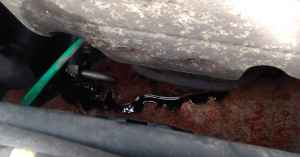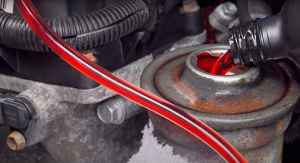The steering system in the Chevrolet Impala (or any other modern-day vehicle) is pretty sophisticated. And, it implements the so-called rack and pinion mechanism. Essentially, it’s a combination of different mechanical parts: the shafts, universal joints, tie rods, and, of course, the steering rack, which aims the wheels in the correct direction. Now, it’s safe to say that the rack + pinion are the most important parts of this system.
When you’re turning the steering wheel, you’re actually turning the pinion gear. That sends a signal to the rack, which, in turn, commands the shafts/rods to move the car left or right. So, yes, this is a rather complex mechanism that – unfortunately – does fail/malfunction sometimes. Today, our focus will be on the most common Chevy Impala rack and pinion problems. Let’s get to it!
What Happens when the Rack-Pinion System Fails?
As we just learned, the rack is the heart of any car’s steering. So, when it wears out, gets rusty, or gets damaged, you lose the ability to control the vehicle. Well, you don’t lose it entirely, of course, but the steering system will, most certainly, be compromised. When this happens on a busy highway with dozens of cars passing you buy, it can lead to catastrophic consequences for you, the passengers, and fellow drivers on the road.
That’s why it’s very important to constantly keep your eye on the steering rack and pinion and perform regular maintenance checks. The sooner you detect one of the following symptoms/side effects/problems, the better. That will save you time, big bucks on an expensive repair, and, above all, help to avoid a crash behind the wheel of the Impala.
Common Issues with the Steering Mechanism
Disturbing noises coming from under the vehicle, steering fluid leaks, strong odors, and a “stubborn” steering wheel are among the most common and the most dangerous problems with the rack and pinion system. Join me, and let us talk about all these symptoms in more detail and see what we can do to fix the issue(s).
#1: An Overly Tight Steering Wheel

More specifically, the power steering unit is losing some of that hydraulic pressure. In other cases, the rack is getting heated up, and that can also lead to an overly stiff steering wheel. What can you do to stop that, though? My first course of action would be to try and add some power steering fluid. If you’re lucky, that will fix this issue right up. Plus, inspecting the rack might also help, as it gets rusty over time. Nothing’s helping? Then try visiting a local mechanic.
#2: Strange Steering Noises
Now, disturbing noises are one of the most obvious signs that there’s something wrong with the car. But what are you dealing with, exactly? What’s the issue? How do you know that it’s the steering mechanism and not the engine, spark plugs, exhaust manifold, muffler, or something else? Well, you won’t have to do a lot of guessing, because this is a grinding noise, and it only appears when you’re steering the wheel left or right.
More good news: this issue is very easy to fix. Most likely, you’re dealing with harsh metal-on-metal contact due to a lack of proper lubrication. As a result, the steering system makes a screeching, grinding sound. Go right ahead and add some grease to the rack and pinion mechanism. Right now, decent-quality lube slash grease can be yours for 10-15 US dollars, and it will last for a very long time.
#3: Power Steering Fluid Leakage
I mentioned the power steering fluid briefly when talking about stiff steering wheel behavior. Well, it can be another big issue. In fact, it’s one of the most common 2006 Chevy Impala rack and pinion problems. No matter what component or system we’re talking about, be it the engine, transmission, brakes, or, as in this case, the steering mechanism, a leak is always bad news. With the power steering system, low fluid will result in inconsistent and rough steering.

Lucky for us, automobile leaks usually take very little time to seal. All you’ll need is high-quality adhesive tape (the 3M tape will be great) or some sort of sealant/putty. The market has lots of different sealants available for very cheap ($10-30, depending on the size of the tube/bottle).
#4: A strong Burning Smell

Again, don’t push your luck and stop the Impala when you smell burning oil. It would be best to find a safe spot where you can park the car and inspect it. Play this one safely: don’t hit the road unless you’re 1000% sure that you don’t have a power steering fluid leak or that you’ve fixed it. As we already learned, low fluid levels cause overheating of the rack-pinion mechanism, which can result in a fire that you probably won’t be able to put out.
Conclusion
Chevrolet’s Impala is one of the most legendary nameplates to ever hit the dealerships. It’s been around for decades, constantly improving the original “formula”. It’s not perfect, of course, and does break down once in a while. Today, we discussed the known issues with the rack and pinion system. A strong smell, strange noises, leakage of the fluid, and rough steering wheel performance are the most common problems.
This is especially true if you own a 2005-2010 Chevy Impala. On the bright side – by knowing what to expect, it will be much easier to minimize the risk and save yourself an expensive trip to the local repair shop. Take proper care of your vehicle, run regular maintenance inspections, and check back with me for new guides and reviews!

Add Comment